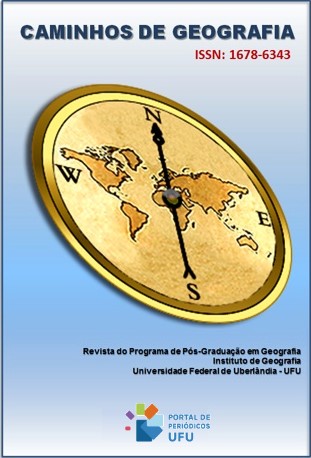THE HILEIA BAIANA IN THE ATLANTIC RAINFOREST BIOME: HAS THE TRANSITION FROM FORESTS TO MONOCULTURES ALTERED THE VOLUME OF RAINFALL?
DOI:
https://doi.org/10.14393/RCG2510171644Palabras clave:
Climate change, Land use, Rainfall reduction, MapBiomasResumen
Human activities have been affecting the climate all over the globe, making extreme weather events increasingly common. In the controversial relationship between man and the environment, a particular region within the Atlantic Rainforest Biome, the Hileia Baiana, stands out as one of the richest and most fragile hotspots on the globe. Despite its biological importance, this region has suffered decades of indiscriminate deforestation, reducing the original biome to less than 10%. Therefore, it was checked whether the loss of natural vegetation caused significant rainfall changes. To this end, the present study evaluated the rainfall stations in the area of influence of this study between 1943 and 2020, with a buffer of 30 km beyond its boundaries. The results showed 14 stations with a reduction in rainfall volumes at the 5% significance level. Between 1984 and 2021, there was a reduction in 3,542.15 km² of Atlantic Forest, in contrast to an increase of 4,845.45 km² in silviculture areas, in the Hileia Baiana region. Our findings indicate rainfall changes coinciding with areas that are no longer covered by the Atlantic Rainforest and gave way to pastures, agriculture, and forestry, concluding that the landscape changes are directly related to climate behavior in the region.
Descargas
Descargas
Publicado
Cómo citar
Número
Sección
Licencia
Derechos de autor 2024 Fernando Rios de Souza, João Batista Lopes Silva, Bento Santos de Brito Júnior, Ely de Jesus Nunes

Esta obra está bajo una licencia internacional Creative Commons Atribución-NoComercial-SinDerivadas 4.0.
Los autores que publican en esta Revista aceptan los siguientes términos: a) Autores conserva los derechos de autor y otorga a la revista el derecho de primera publicación, con el trabajo bajo licencia Creative Commons Attribution-NonCommercial NoDerivs 4.0 International. b) Se permite y anima a los autores a publicar y distribuya su trabajo en línea (por ejemplo, en repositorios institucionales o en su sitio web personal), ya que esto puede generar cambios productivos, así como incrementar el impacto y cita de trabajo publicado. c) Por el hecho de aparecer en este diario de acceso público, los artículos son de libre uso, con sus propias atribuciones, en aplicaciones educativos y no comerciales.











